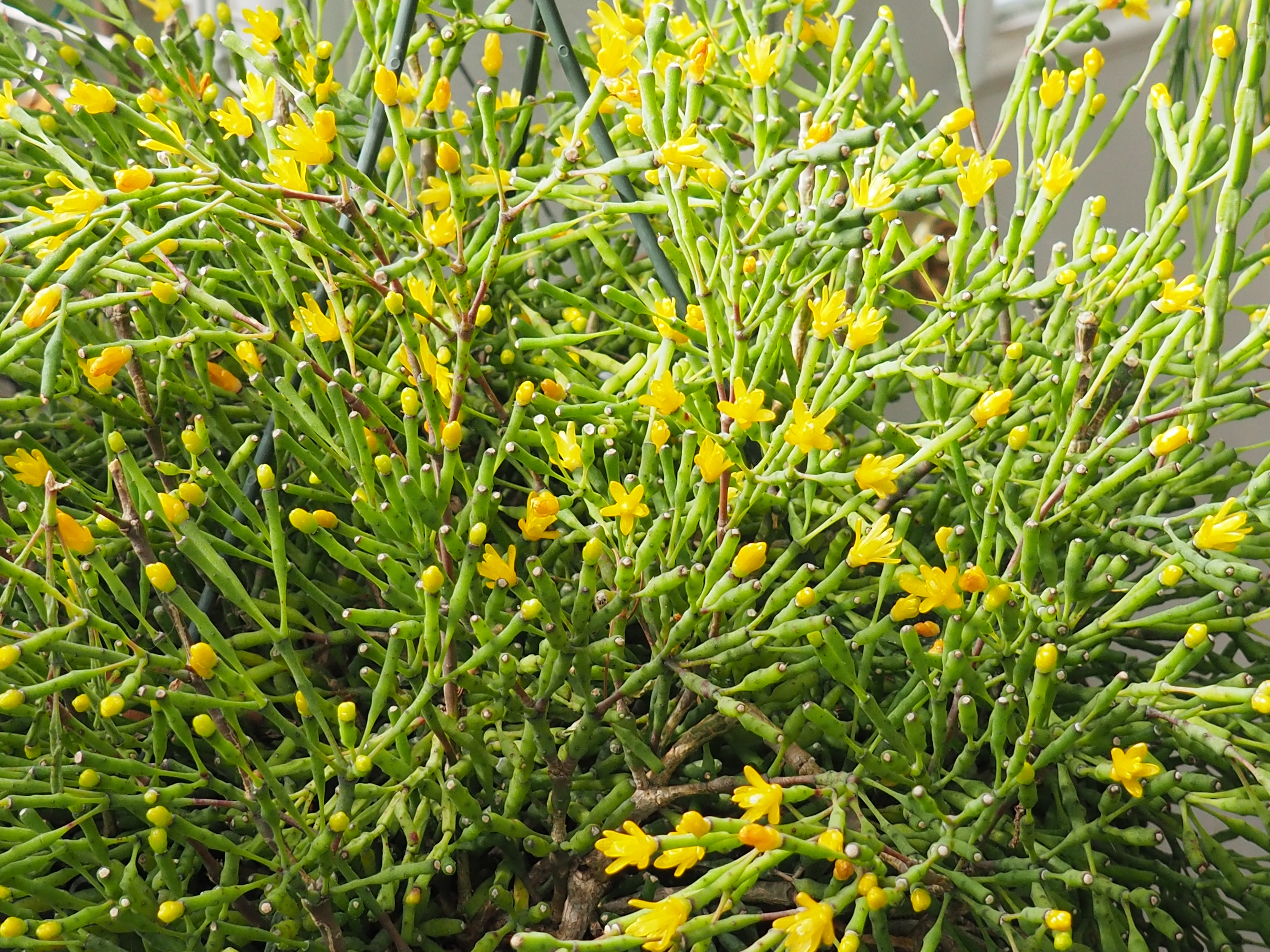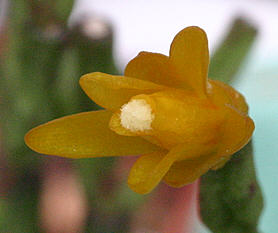| 

|
Desc from B&R 1923
Plant
- stems 1 to 2 meters long with a jointed cylindric trunk;
Branchlets -
club-shaped,
the lower part very slender and pedicel-like, 1.5
to
3 cm. long, green or purplish;
Areoles
-
of
cultivated specimens without setae;
Flowers
-
8
to 10 mm. long, salmon-colored;
Outer sepals
-
short
and obtuse;
Inner petals - somewhat crenate, obtuse;
Filaments - yellowish, at top appressed against style, shorter than petals;
Style - yellowish; stigma-lobes 4 or 5, white.
Type
locality; Recorded originally from the West Indies in error.
The
following note was made by Dr. Rose in 1915 while collecting at Rio
de Janeiro:
The
plant grows on trunks of trees, its roots long and fibrous, 4 dm.
long or more and wrapped about the trunk of the tree; at first it
is erect, then spreading and finally pendent; it is then a meter longer
or more and very much branched; main stem and branches 5 to 10 mm.
in diameter, made whorls of 2 to 6.
forma
salicornioides
DISTRIBUTION
Brazil (Bahia?, Minas Gerais, Espirito Santo, Rio de Janeiro, Sao Paulo,
Parana): epilithic and epiphytic in camporupestre,
Atlantic and seasonal forest, near sea level to 1850 m altitude.
Desc
from Hunt 2006
Body much branched; branches erect or pendent, eventually woody, cylindric;
branch segments numerous, clavate, 1.5-5cm x 3-5mm, arising in whorls
of 2-6, typically with neck at base and resembling inverted bottles,
in some forms ±cylindric to globose, sometimes bristly; flowers
terminal or apical, up to 13 x 10mm, yellow to orange; inner tepals
erect to incurved, hiding the stamens; fruit globose, ca 5mm, white
De Candolle in Prodromus Systematis Naturalis Regni Vegetabilis 3 :
475-476. 1828
(page 476).
4. R. SALICORNIOIDES (Haw. suppl. p. 83.) erecta ramosa, articulato-prolifer,
articulis
brevissimis obclavatis teretibus angulatisque pilis minutissimis apice
floriferis, floribus
solitariis. In Amer. calid. Otto et Link abb. t. 49. – Petala
7-10 acuta flava, staminibus
styloque longiora. Bacca ign. Salm-Dyck in litt. (v.v. sine fl.)
English translation
Plant with erect branches, many joints, joints very short, club shaped
but joined by the thicker end, tubular, angled, smallest of hairs, flowering
at the top, flowers solitary. In tropical America. Petals 7 –
10, acute, yellow, Stamens longer thatn the Style. Fruit unknown.
Treated as H. salicornioides fa. salicornioides by B &T in Bradleya
13
Previous Page |
|